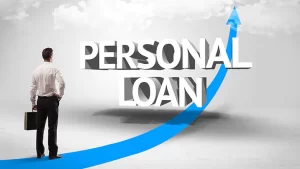Forex Trading for the Eco-Conscious Investor: A Modern Dilemma, A New Path
5 min readLet’s be honest. When you picture a forex trader, you probably imagine someone glued to multiple screens, tracking the dizzying dance of the EUR/USD, fueled by coffee and the pure adrenaline of global finance. It feels… detached from the physical world. And if you’re someone who recycles meticulously, thinks about your carbon footprint, and supports green companies, the world of currency trading might seem like the antithesis of your values.
But here’s the deal: the financial landscape is shifting. The old walls between profit and purpose are crumbling. You absolutely can navigate the $7.5 trillion-a-day forex market with an environmentally conscious mindset. It just requires a different map. This isn’t about finding a “green” currency—that doesn’t really exist—it’s about a green approach.
Why Forex Feels at Odds with a Green Mindset
First, let’s acknowledge the elephant in the room. Traditional forex trading has a sustainability problem, and it’s not just one thing. It’s a few key issues that understandably make eco-investors hesitate.
The Energy Intensity of Trading
All those servers running 24/5, the massive data centers processing millions of trades, the constant energy draw… it adds up. While it’s not as blatant as a smokestack, the digital carbon footprint is a real, if often invisible, cost.
Indirect Exposure to “Dirty” Industries
This is the big one. When you buy the Canadian dollar (CAD), you’re often making a bet on the health of the Canadian economy, which is heavily tied to… oil. The Australian dollar (AUD) is a proxy for mining and commodities. A strong Russian Ruble (RUB) used to signal strong oil and gas prices. Your trade, even if it’s just numbers on a screen, can indirectly support industries you might personally oppose.
Reframing Your Role: The Conscious Forex Strategist
Okay, so the problems are clear. But what if you reframed your entire purpose? Instead of just being a trader, you become a conscious capital allocator. Your trades aren’t just bets; they’re subtle votes. Votes for certain economic policies, for sustainable national trajectories, and against others.
Think of it like this: you’re not buying a barrel of oil when you trade CAD. You’re expressing a view on a country’s economic direction. And you can use that view to align with your values.
A Practical Game Plan for the Green-Leaning Trader
1. Follow the Green Policy, Not Just the Price
Fundamental analysis is your best friend here. But go beyond standard interest rates and GDP. Dive into a country’s environmental policies. Is a nation investing heavily in renewable energy infrastructure? Are they leading in green technology innovation? These long-term trends can have a profound impact on a currency’s strength.
For instance, a country committing billions to a green hydrogen economy is making a strategic bet on its future export power. That’s a fundamental you can trade on.
2. The “Go Long on Sustainability” Mindset
Consider focusing your strategies on currencies of nations that are demonstrably leading the charge. The Norwegian Krone (NOK), for example, is backed by the world’s largest sovereign wealth fund, which—and this is key—is increasingly divesting from fossil fuels and investing in renewables. That’s a powerful signal.
Similarly, the Euro (EUR) is often influenced by the European Union’s ambitious Green Deal. Trading the EUR can be a way to gain exposure to a massive, regulated bloc pushing for a sustainable economic transformation.
3. What to Avoid (Or Short)
Just as you can go long on sustainability, you can, through your analysis, choose to avoid or even short currencies of economies that are heavily reliant on fossil fuel exports and resistant to the energy transition. This is a more advanced and higher-risk strategy, but it aligns your trading directly with your outlook on the global energy shift.
Beyond the Currency Pair: Choosing an Eco-Conscious Broker
Your values shouldn’t stop at your trading strategy. They should extend to who you trade with. The broker you choose is a partner. Do a little digging. Look for brokers who:
- Prioritize renewable energy for their operations. Some forward-thinking firms now power their data centers with solar or wind. It’s a real thing.
- Have strong Corporate Social Responsibility (CSR) reports. A company that is transparent about its own environmental impact is one that takes it seriously.
- Offer and promote ESG (Environmental, Social, Governance) focused funds or CFDs. While you’re trading forex, their overall product offering tells you about their corporate values.
The Reality Check: There Are No Perfect Answers
Let’s not sugarcoat this. This is a nuanced path, not a pure one. The global economy is a tangled web, and even the “greenest” nations have complex, sometimes contradictory, economic drivers. The Swiss Franc (CHF) is considered a safe-haven, but Switzerland’s economy is deeply intertwined with global industry.
The goal here isn’t perfection. It’s awareness and intentionality. It’s about making more informed decisions, understanding the deeper implications of your trades, and using your capital to, in whatever small way, lean into the future you want to see.
A Final Thought: Your Portfolio as a Statement
In the end, forex trading for the environmentally conscious investor is a paradigm shift. It moves you from a passive participant in a vast, anonymous system to an active, strategic thinker. You’re not just chasing pips; you’re analyzing the world’s transition to a greener economy and positioning your portfolio accordingly.
That is a powerful form of modern, conscious investing. Your trading account, believe it or not, can be a statement of your values—a bet not just on a currency, but on a particular kind of future.





